pgriz
Been spending a lot of time on here!
- Joined
- Jul 30, 2010
- Messages
- 6,734
- Reaction score
- 3,221
- Location
- Canada
- Can others edit my Photos
- Photos OK to edit
Although I have many years of photographic experience, I have not studied light and portraiture. So I've been practicing and need some feedback from the experienced portraiture photographers - am I getting the basic concepts, and if not, what specific comments can you make to help me improve?
First, let me introduce my subject. His name is Ivan the Balalaika player, but we call him "Woodie".
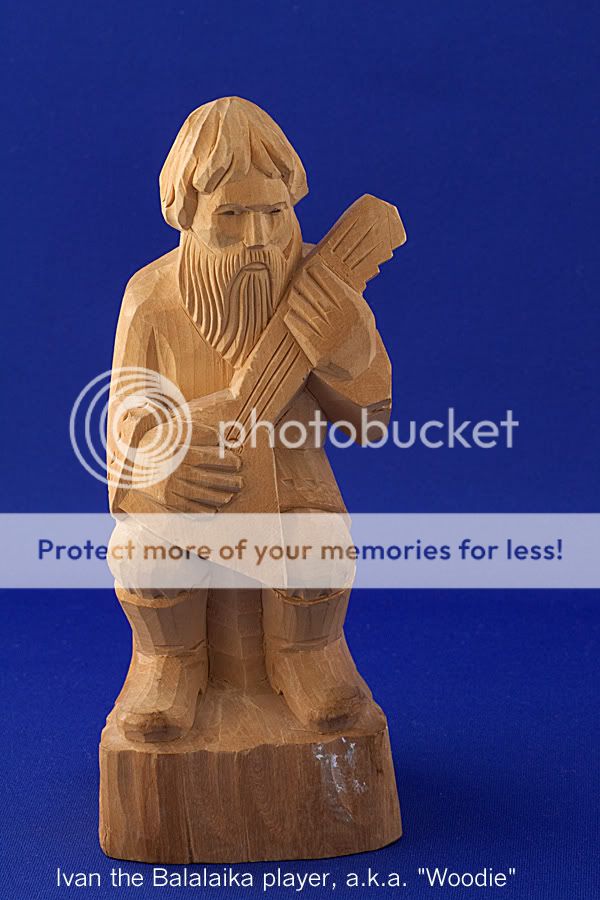
Woodie's advantage (for me) is that he is very patient. Never needs to do something more important, never wants a bathroom break, never needs to go smoke... He likes his life simple. I like that in a test subject. Which is why you're not seeing photos of my pets, my wife, my kids or my friends. They have more important things to do. Natch.
In the attached photos, you'll see a salt shaker in the photos mainly so that I could see the reflection of the lights and see where they were coming from. Woodie's eyes, alas, do not do a good job of reflecting the light sources.
So we start with Broad Lighting (with fill). Main light was on Woodie's right, about 30 degrees from the horizontal plane, and about 70 degrees to the right of Woodie's central plane. Fill light was used to Woodie's left, at about 45 degrees from the horizontal and about 45 degrees to the left of Woodie's central plane.
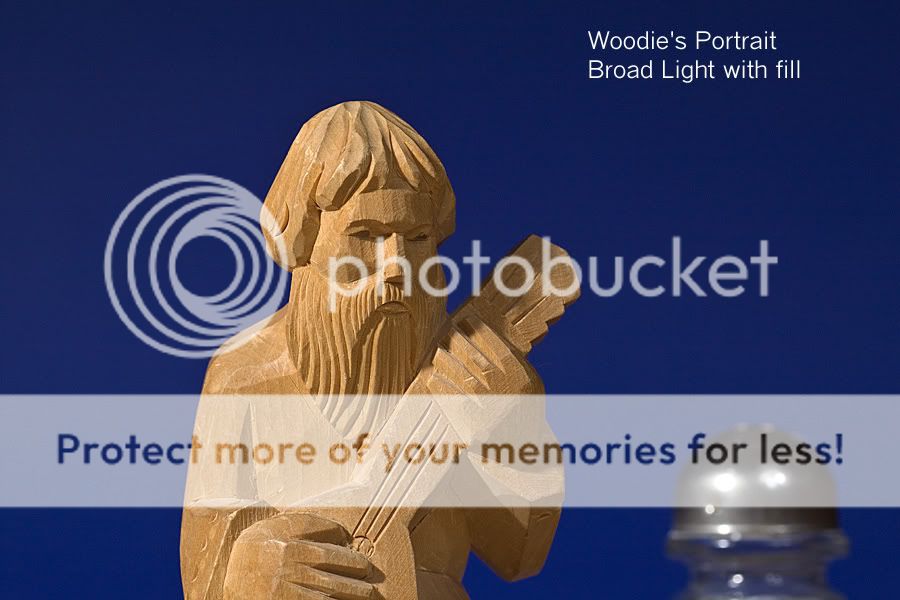
Next, Short Lighting (with fill). Light is positioned to Woodie's left, about 45 degrees vertically (1:30 position), and about 30 degrees to his left from his centerline. Fill light of 1 stop less positioned to his right, about level with the horizon.
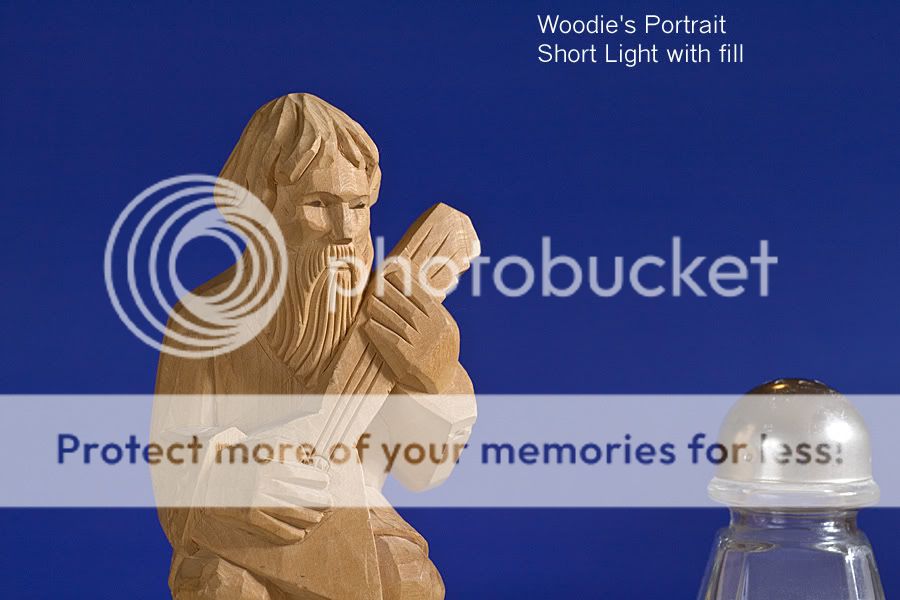
A variation on Short Lighting is Rembrand Lighting where the object is to create a triagular pattern of light on the cheek away from the main light. This is similar to short lighting, but with the main light positioned further to the left of the subject. Here, the main light is at about 35 degrees vertically, and about 75 degrees to the left of Wood's center plane. A fill reflector is on Woodie's right.
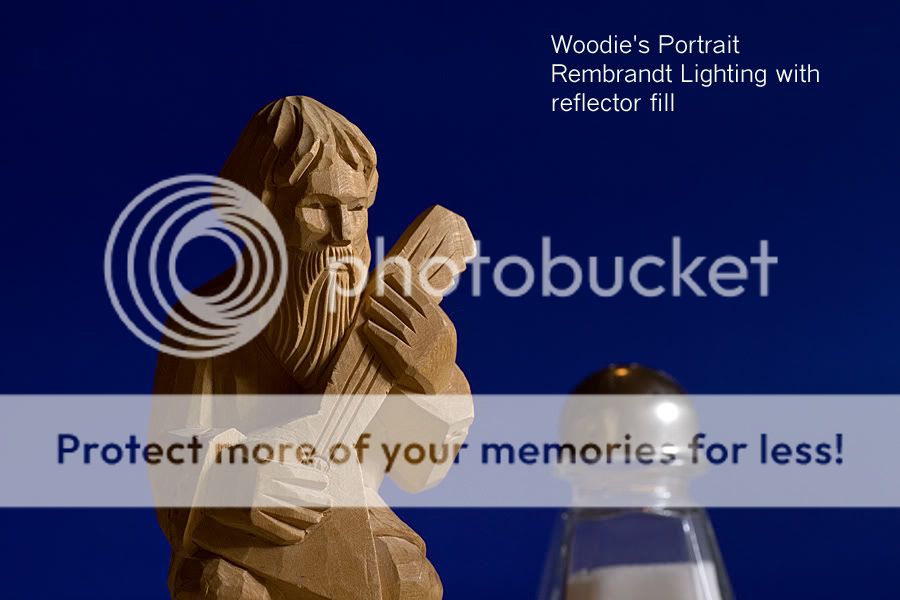
Next is the Butterfly lighting or Paramount lighting, in which one main light was used, positioned about 75 degrees from the horizontal and at the middle of Woodie's central plane.
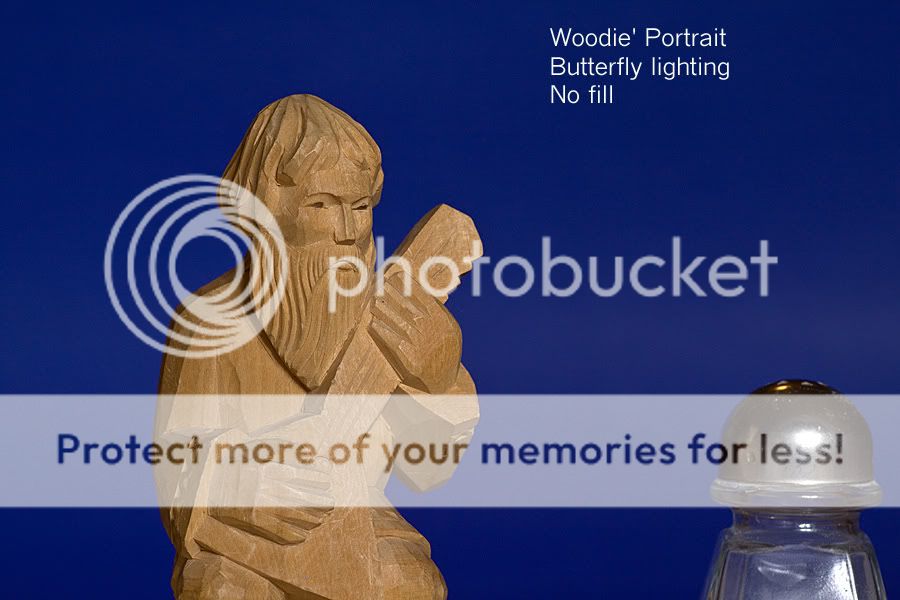
Finally, we do the Split Lighting, were the main light was positioned to Woodie's left (90 degrees from his center plane), and about level with the horizon. Fill light was on Woodie's right, also lefel with the horizon and about two stops less light than main light.
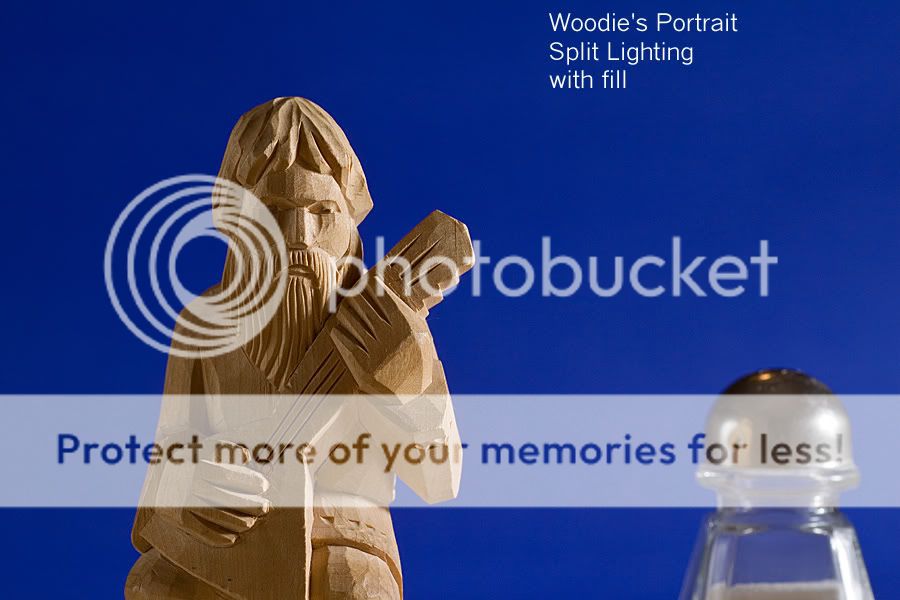
Soooo.... Did I get it right? If yes, will now how to cajole/bribe/sweet-talk one of the family members to pose. If not, will continue to practice (Woodie's patient - did I tell you that?).
First, let me introduce my subject. His name is Ivan the Balalaika player, but we call him "Woodie".

Woodie's advantage (for me) is that he is very patient. Never needs to do something more important, never wants a bathroom break, never needs to go smoke... He likes his life simple. I like that in a test subject. Which is why you're not seeing photos of my pets, my wife, my kids or my friends. They have more important things to do. Natch.
In the attached photos, you'll see a salt shaker in the photos mainly so that I could see the reflection of the lights and see where they were coming from. Woodie's eyes, alas, do not do a good job of reflecting the light sources.
So we start with Broad Lighting (with fill). Main light was on Woodie's right, about 30 degrees from the horizontal plane, and about 70 degrees to the right of Woodie's central plane. Fill light was used to Woodie's left, at about 45 degrees from the horizontal and about 45 degrees to the left of Woodie's central plane.

Next, Short Lighting (with fill). Light is positioned to Woodie's left, about 45 degrees vertically (1:30 position), and about 30 degrees to his left from his centerline. Fill light of 1 stop less positioned to his right, about level with the horizon.

A variation on Short Lighting is Rembrand Lighting where the object is to create a triagular pattern of light on the cheek away from the main light. This is similar to short lighting, but with the main light positioned further to the left of the subject. Here, the main light is at about 35 degrees vertically, and about 75 degrees to the left of Wood's center plane. A fill reflector is on Woodie's right.

Next is the Butterfly lighting or Paramount lighting, in which one main light was used, positioned about 75 degrees from the horizontal and at the middle of Woodie's central plane.

Finally, we do the Split Lighting, were the main light was positioned to Woodie's left (90 degrees from his center plane), and about level with the horizon. Fill light was on Woodie's right, also lefel with the horizon and about two stops less light than main light.

Soooo.... Did I get it right? If yes, will now how to cajole/bribe/sweet-talk one of the family members to pose. If not, will continue to practice (Woodie's patient - did I tell you that?).
Last edited:



![[No title]](/data/xfmg/thumbnail/36/36102-8cd330c175e72b4b8009082908e60620.jpg?1734168064)

![[No title]](/data/xfmg/thumbnail/38/38293-15e3a85f038b239e3c60bf9f38f5d56c.jpg?1734172201)
![[No title]](/data/xfmg/thumbnail/31/31747-2e2e2bda16938a6a1d5fd6120c558293.jpg?1734160461)

![[No title]](/data/xfmg/thumbnail/32/32929-22e23acc63d6ecb25e5ee941be87121f.jpg?1734162700)
![[No title]](/data/xfmg/thumbnail/32/32930-09414fc020c2a60a456ff59a05c5ef8f.jpg?1734162706)




